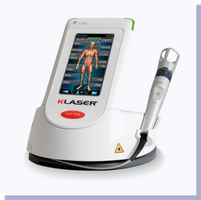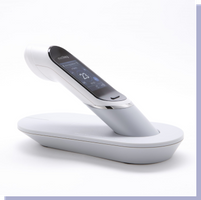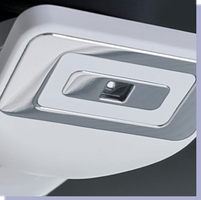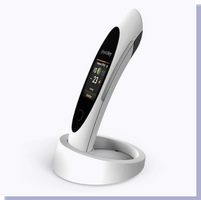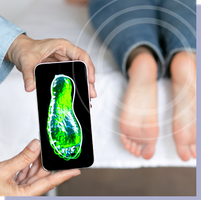Anyone who has ever experienced nerve pain (neuropathic) knows that it is not an experience we would wish on our loved ones. It can be dull and continuous, or sharp as a knife and flashing like an electric shock, but unlike the pain resulting from an injury, it can make us turn over in our bed, unable to fall asleep and find the right position, or even in our chair, unable to sit up. For example, when the pain radiates from the lower back to the buttocks and legs. In short – really unpleasant.
What is nerve pain?
This pain is the result of disruption or damage to the nervous system in all its components – whether it is the peripheral nerves (those that spread from the spinal cord and brain to the body’s organs, hands and feet, fingers, etc.), the nerves of the spinal cord, or the brain. Damage to the nerve fibers causes the wrong signals to be sent to the body’s pain centers, and the result is neuropathic pain. It can be mild or severe, come and go intermittently, or be constant over time.
Symptoms of nerve pain
* Spontaneous pain (of unknown origin): The sensation is stabbing, burning, electric shock, tingling, numbness (numbness), or pins and needles.
* Extreme sensitivity to touch or cold (allodynia)
* Enhanced pain sensation to painful stimuli (hyperalgesia): In cases such as a prick or heat, the sensation of pain is much stronger than it should be.
* Hypoalgesia: The opposite of hyperalgesia – when a painful stimulus actually leads to a decrease in the pain response.
* Dysesthesia: various unpleasant or painful sensations.
* Difficulty sleeping: due to emotional stress or disturbed sleep and pain.
Causes of neuropathic pain
* Spinal nerve compression or inflammation
* Heavy alcohol consumption
* Diabetes
* Facial nerve injury
*AIDS
* Central nervous system disorders such as stroke, Parkinson’s, multiple sclerosis
* Shingles
* Complex regional pain syndrome: chronic pain of unusual intensity that affects the extremities (mainly at the tip of the limb)
* Chemotherapy drugs
* Radiation therapy
* Limb amputation: may cause phantom pain
* Trauma or surgeries with nerve damage
* Tumors that press on nerves
Diagnosing nerve pain
* Physical examination (ability to move, pain when pressed, muscle strength, reflexes)
* Checking the patient’s symptoms: sensitivity to touch, pain, and warmth in the painful area
* Imaging tests: X-ray, CT, MRI
* Electrical conductivity test of the nerves
Nerve pain treatment
A personalized program is designed to relieve pain, improve the patient’s quality of life, and treat diseases or tumors. Treatments include:
* Over-the-counter pain relievers: For milder cases of pain.
* Local treatments: creams, ointments, or patches on the painful area that contain pain-relieving substances such as lidocaine or capsaicin.
* Nerve-blocking injections: Injecting steroids or local anesthetics near the affected nerve
* Anticonvulsant or anti-tremor medications: have also been found to be effective in treating nerve pain.
*Antidepressants have been found to relieve neuropathic pain
* Physical therapy: Exercise and massage help to loosen tight muscles caused by nerve pain and ease pain, while encouraging the body to produce natural pain-relieving chemicals. Stretching and low-intensity exercises (such as yoga and swimming) help with this.
* Surgical intervention: As a last resort, in cases where conservative treatment approaches are ineffective, surgery will help reduce the symptoms of nerve pain. For example: in the case of vertebral compression on the spinal nerves (herniated disc, carpal tunnel).
* In extreme cases – nerve removal to reduce or eliminate pain.
* Spinal cord stimulation: Implantation of a device that alters pain signals.
* Transcutaneous electrical nerve stimulation uses a low-level electrical current to disrupt pain signals.
* Acupuncture: Designed to block pain in the energy pathways in the body and to circulate blood to the painful areas.
* Heating/cooling the painful area: to reduce pain and inflammation.
* Massage: Designed to stimulate blood flow to the injured area and relax the tense muscles that add to the pain.
* Vitamins and nutrition: A deficiency in vitamins like B12 can cause nerve pain, so supplements may help. Substances like omega-3s, turmeric, and green leafy vegetables can also reduce inflammation.
Treatment of nerve pain with the most advanced technology
One of the most advanced technologies in the world for treating nerve pain is electrical stimulation (electrotherapy), which has the ability to regulate and balance the nervous system. Q-room Clinic in Tel Aviv offers rapid pain treatment with targeted technology that helps accelerate rehabilitation processes after injuries and nerve pain and improve function in a short time.
The Medkey method, developed in Germany over the years, is based on pain treatment using electrical pulses that receive feedback from the body’s nerves within milliseconds, thus ensuring accurate, effective, powerful and fast treatment. Using a clinical protocol customized for the patient with the help of expert physiotherapists, the device sends electrical waves to the inflamed area, blocking pain signals to the brain, along with releasing chemicals that are natural painkillers and relaxing contracted muscles. In this way, it sometimes replaces the need for surgical treatment and chronic medications. The safe treatment, without side effects, allows for a real improvement in the quality of life of patients.
So if you, like tens of millions around the world, suffer from nerve pain – the Q Room Pain Clinic is your answer for fast and safe treatment. For advice and to schedule an appointment, call: 076-599-7427

